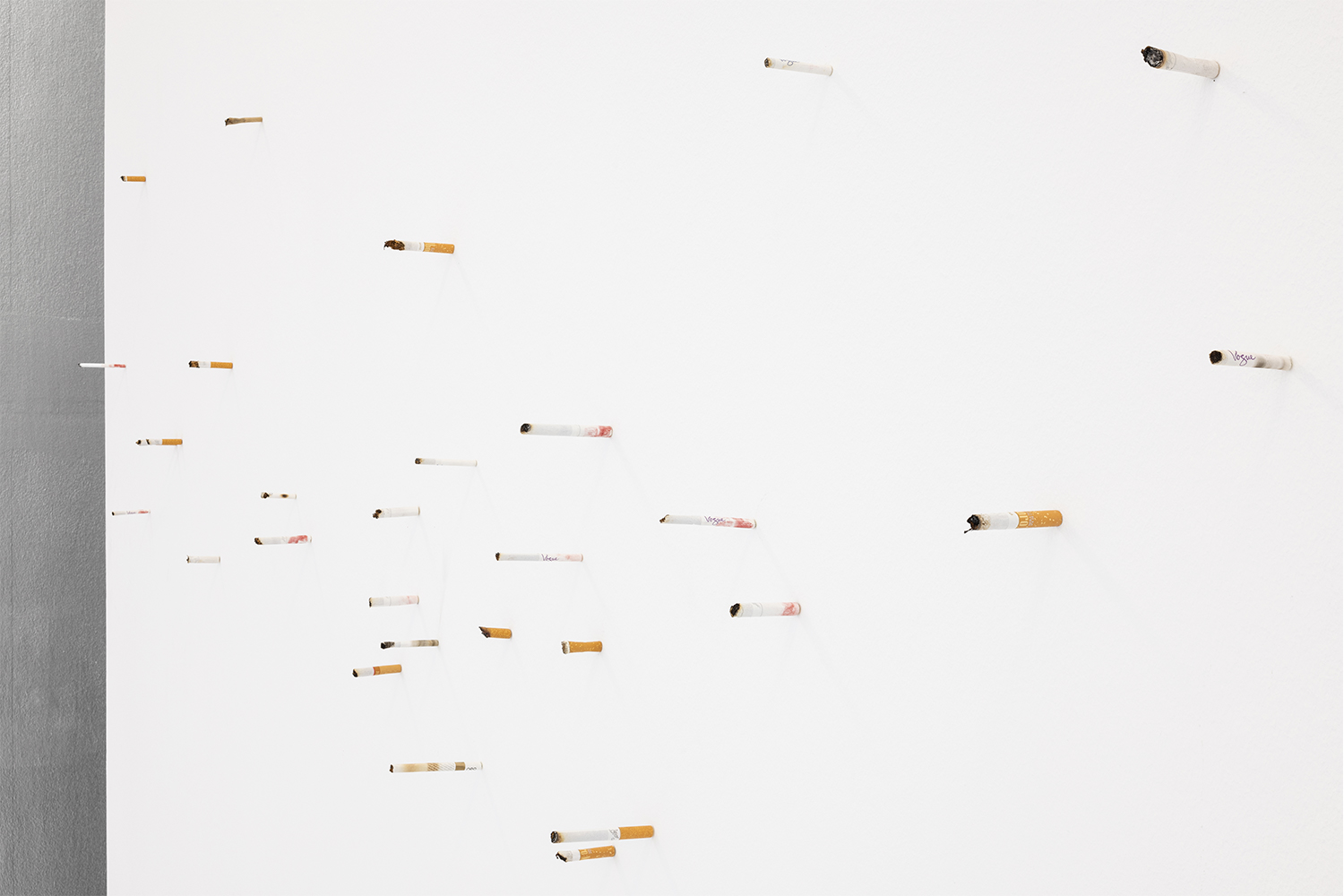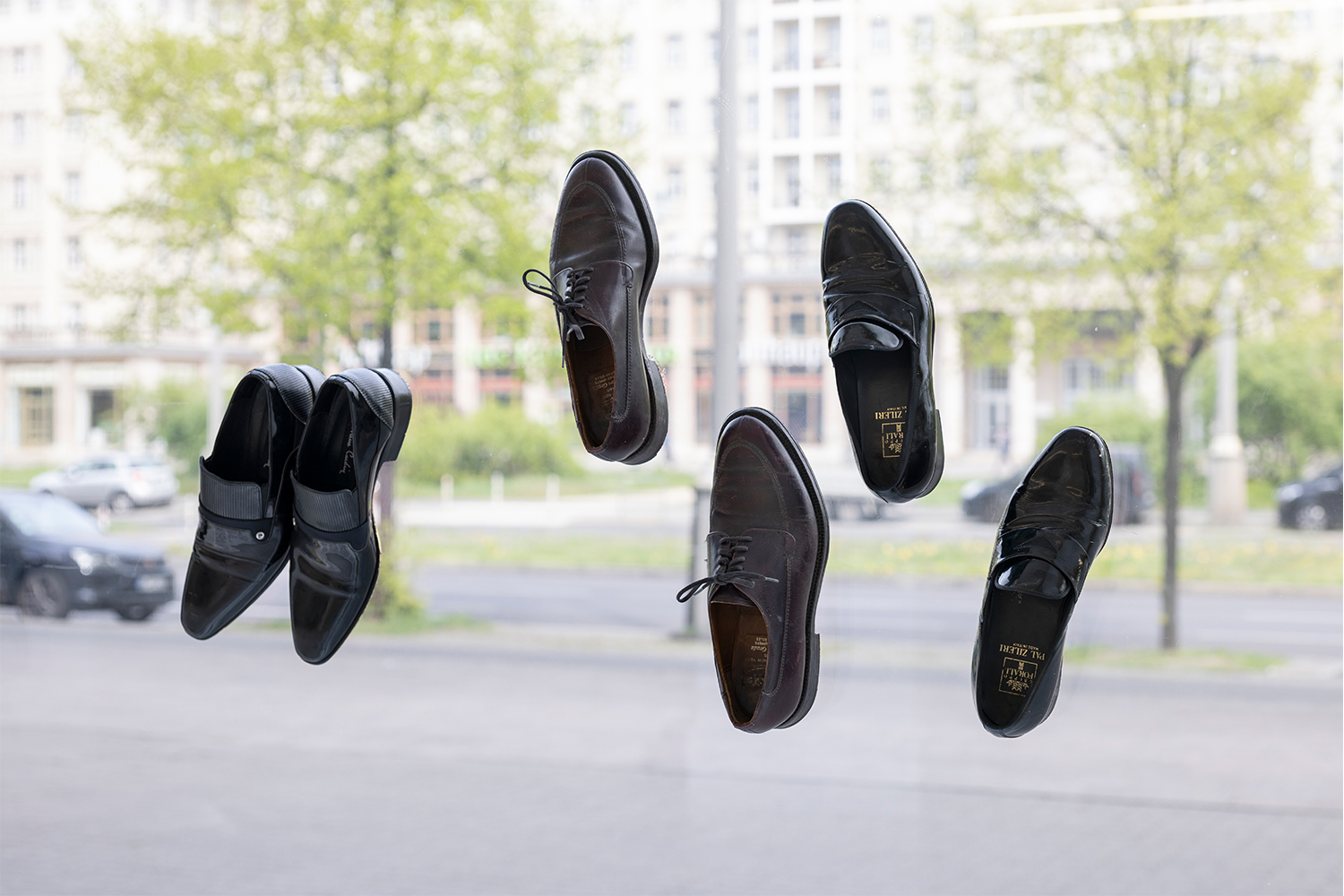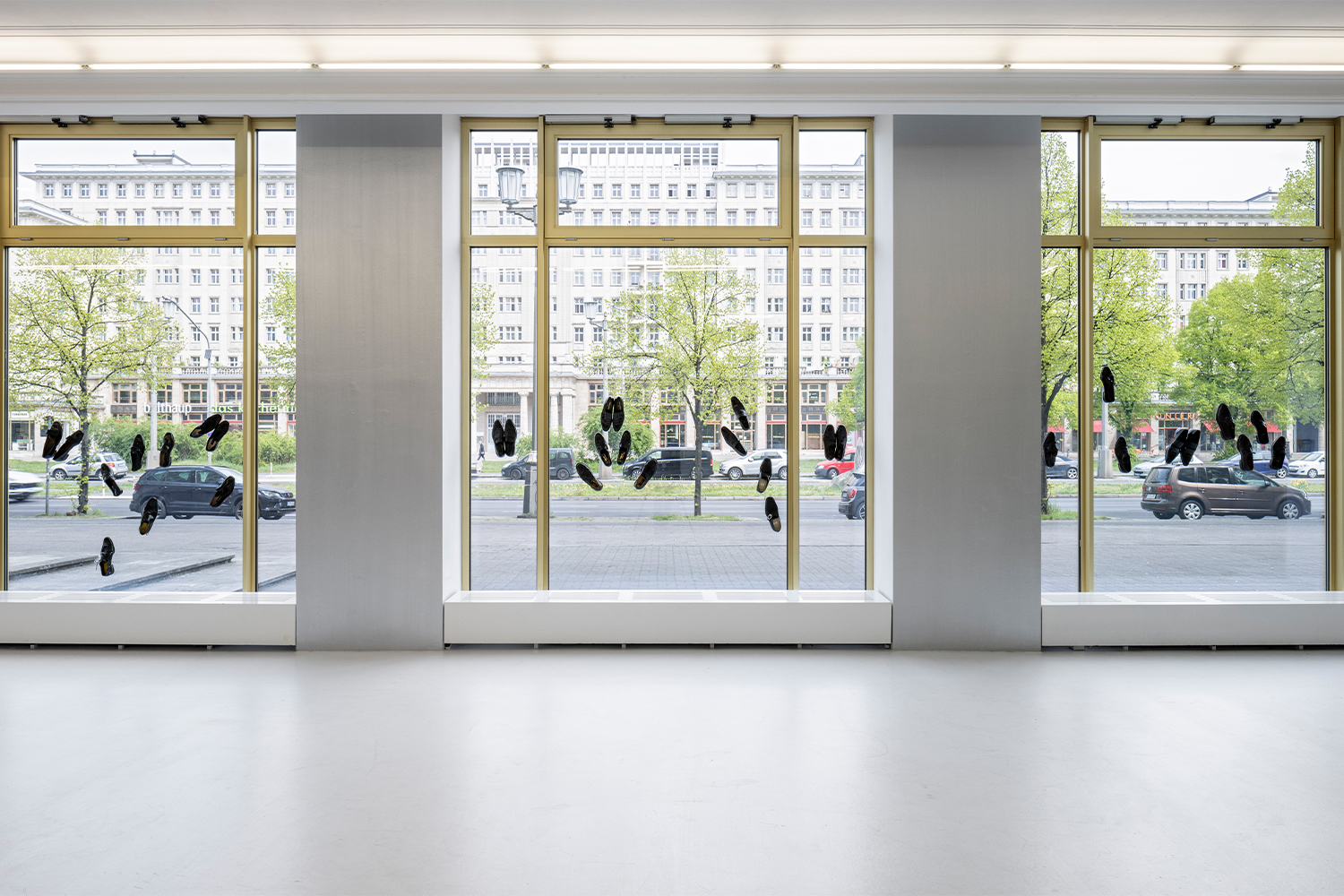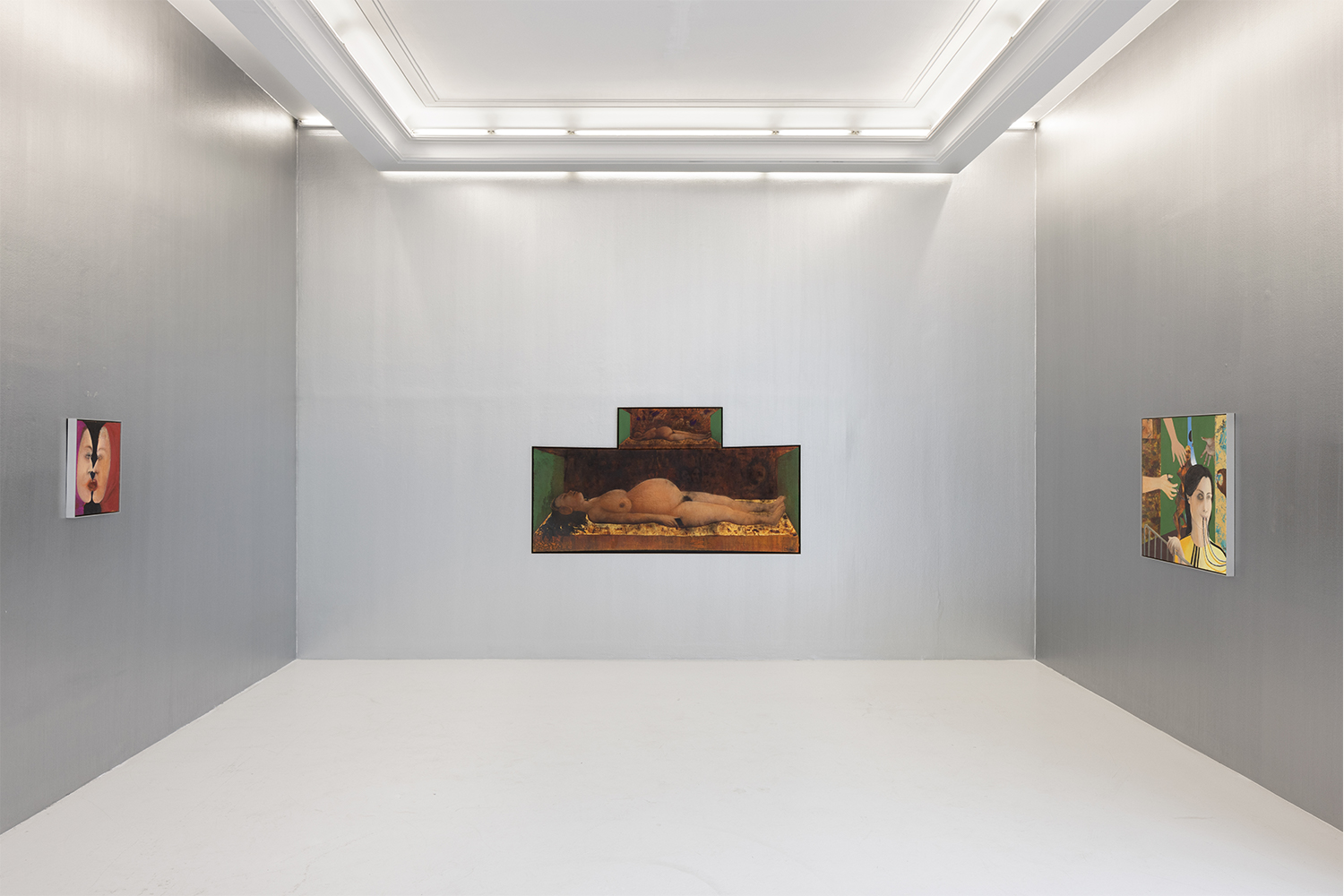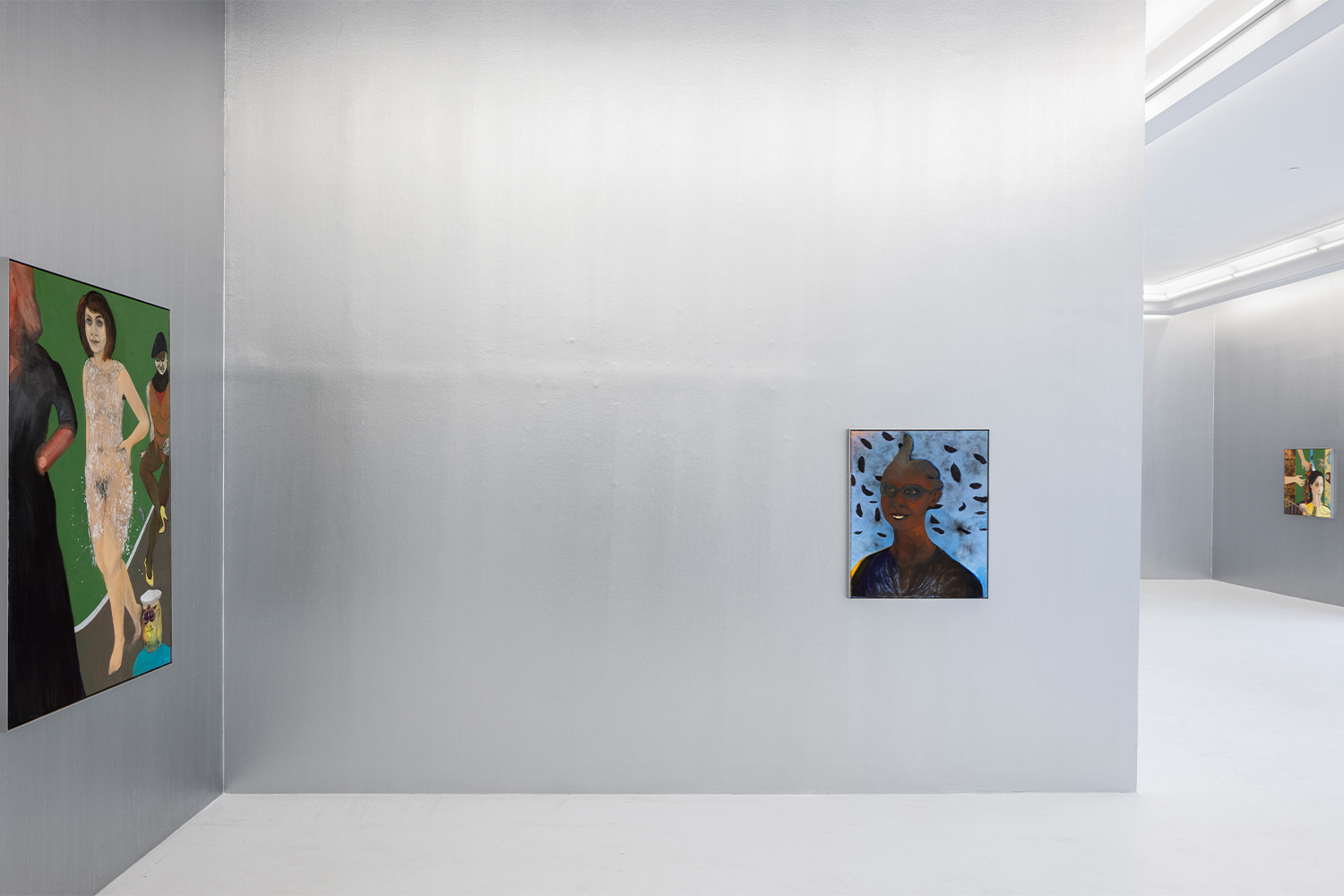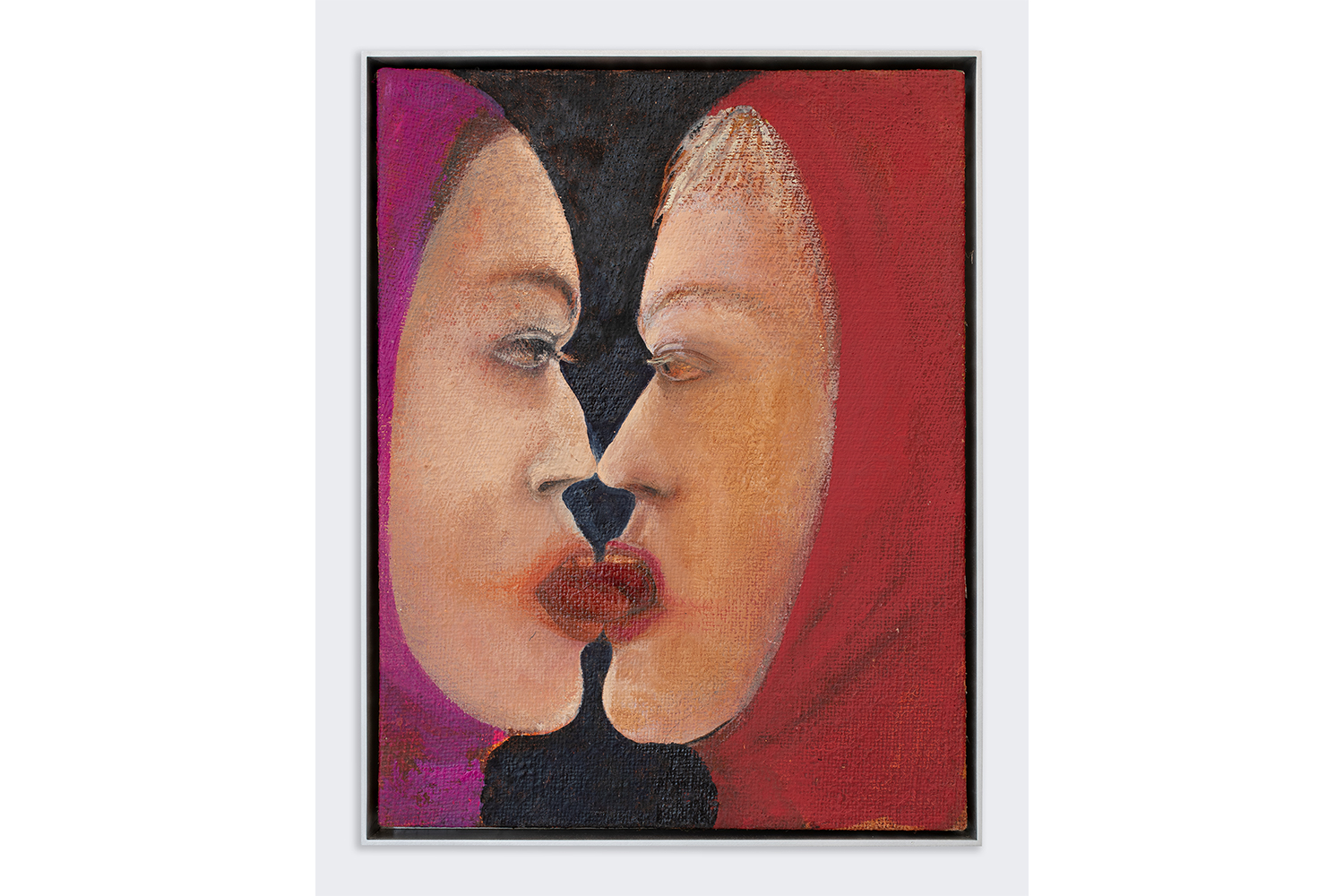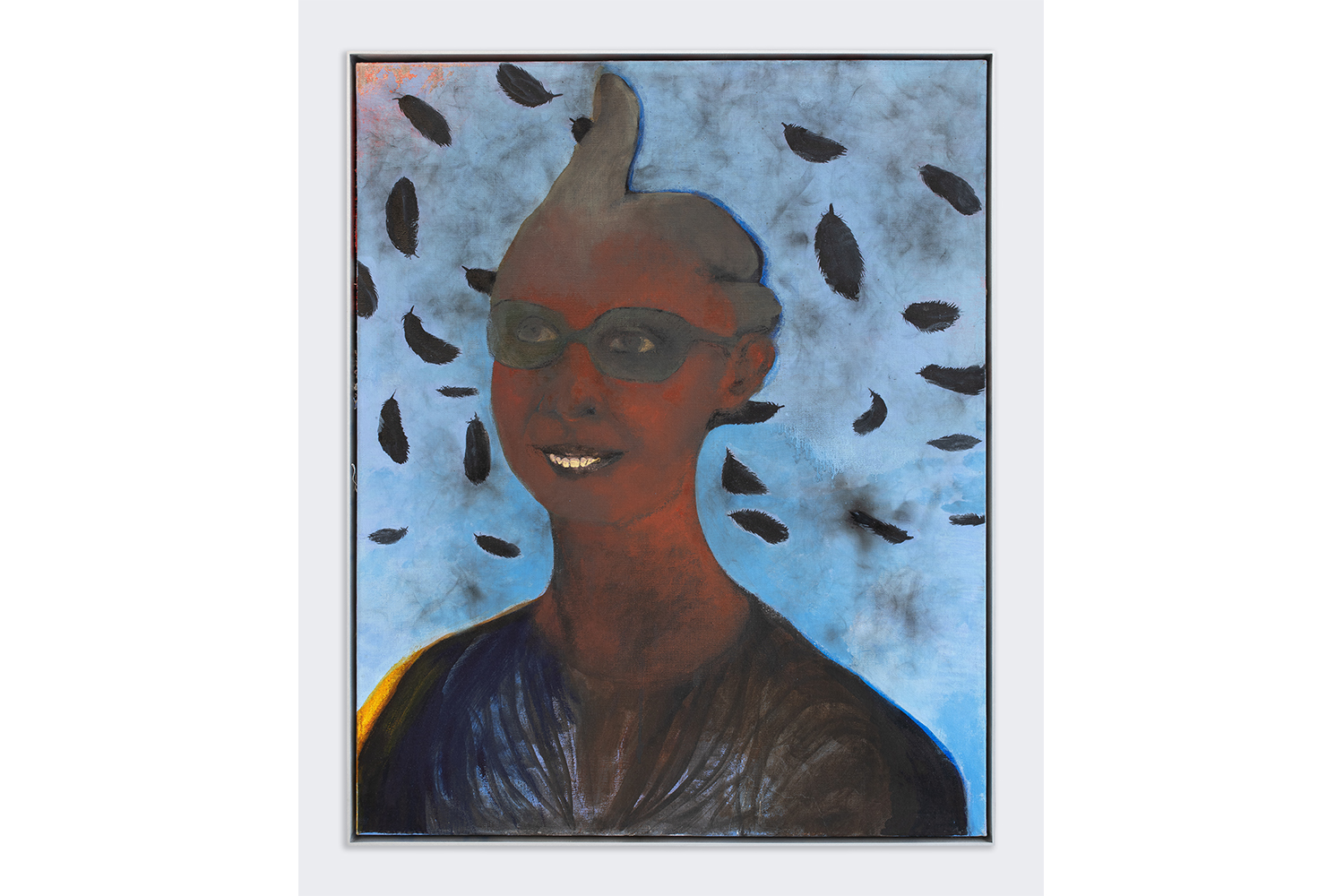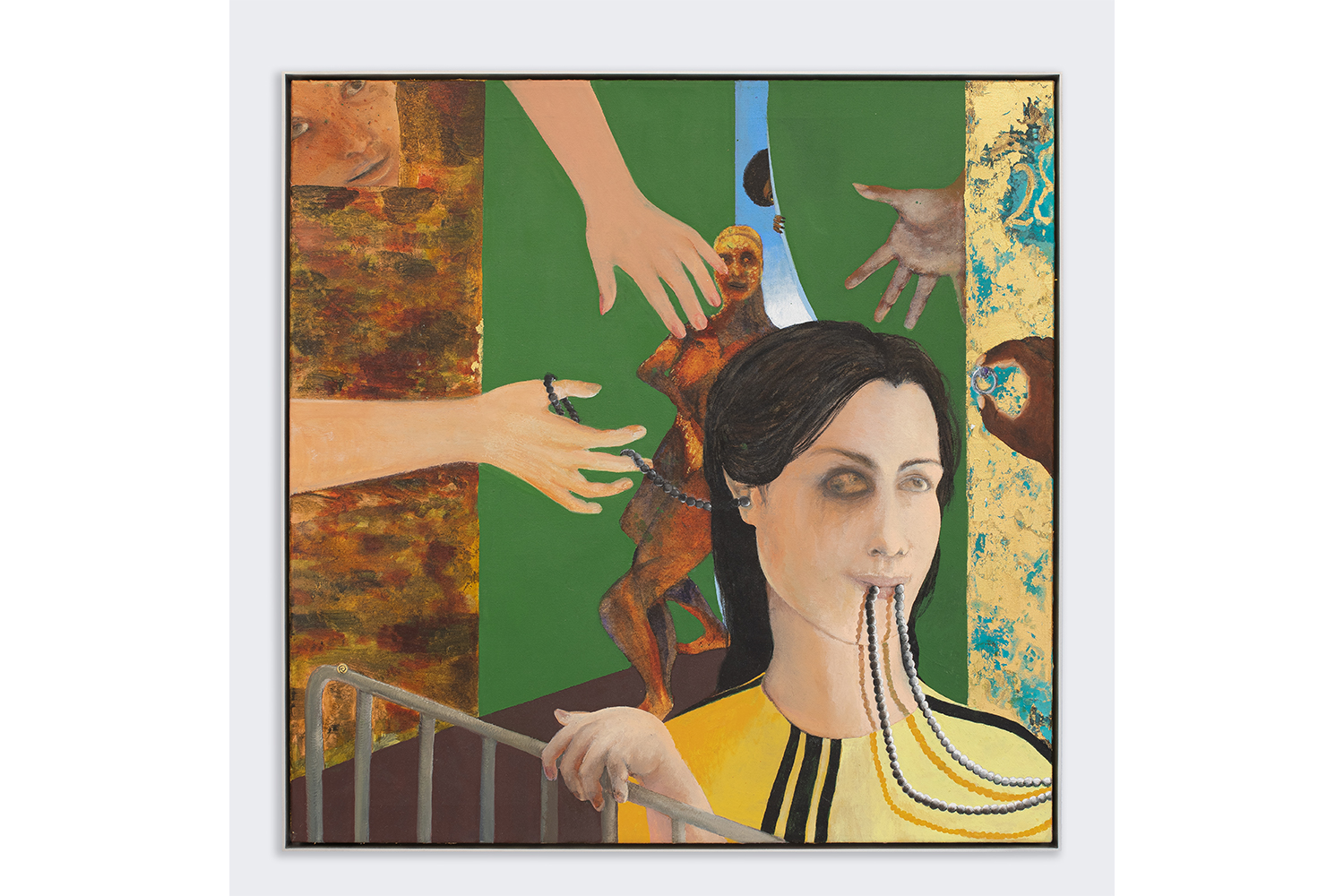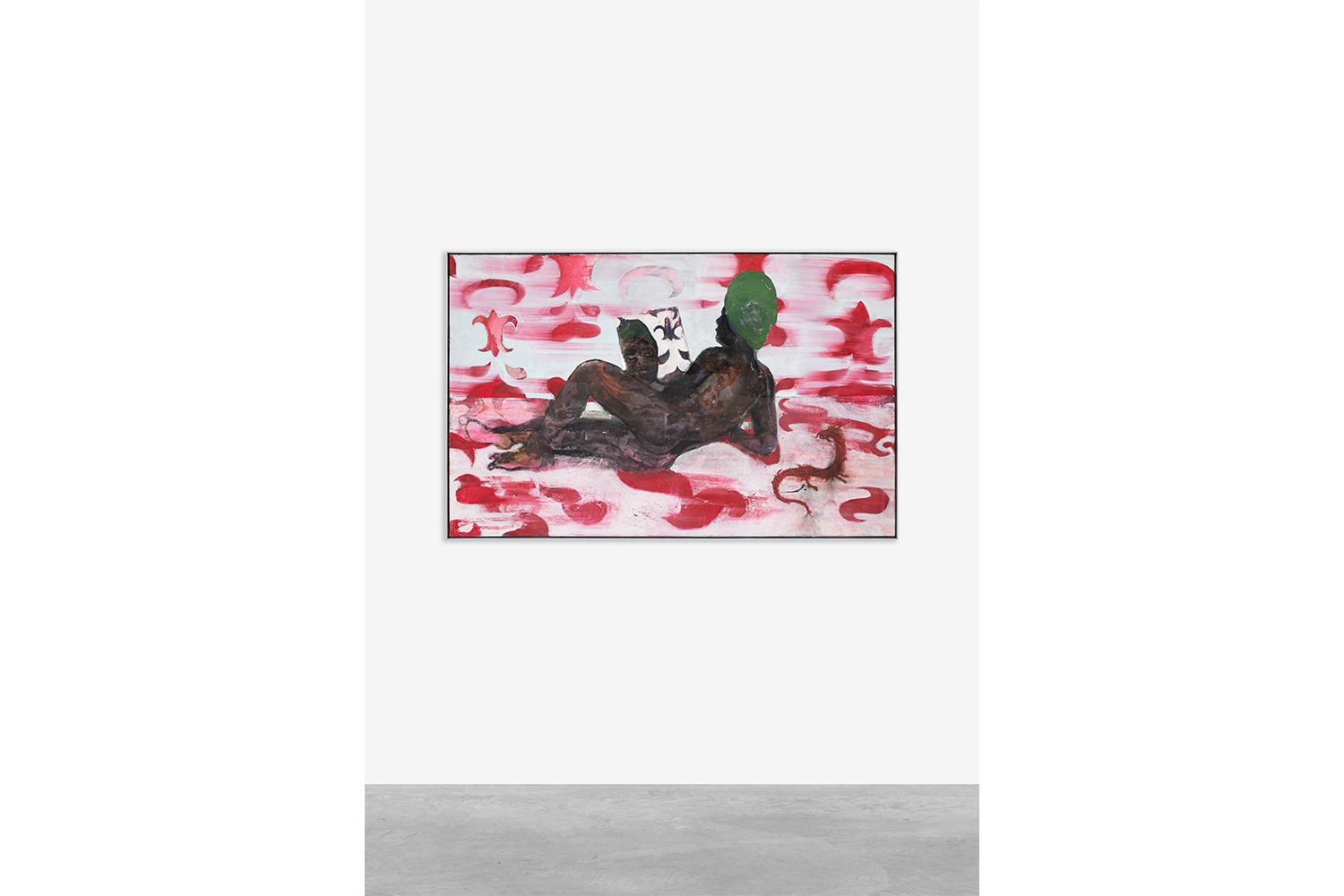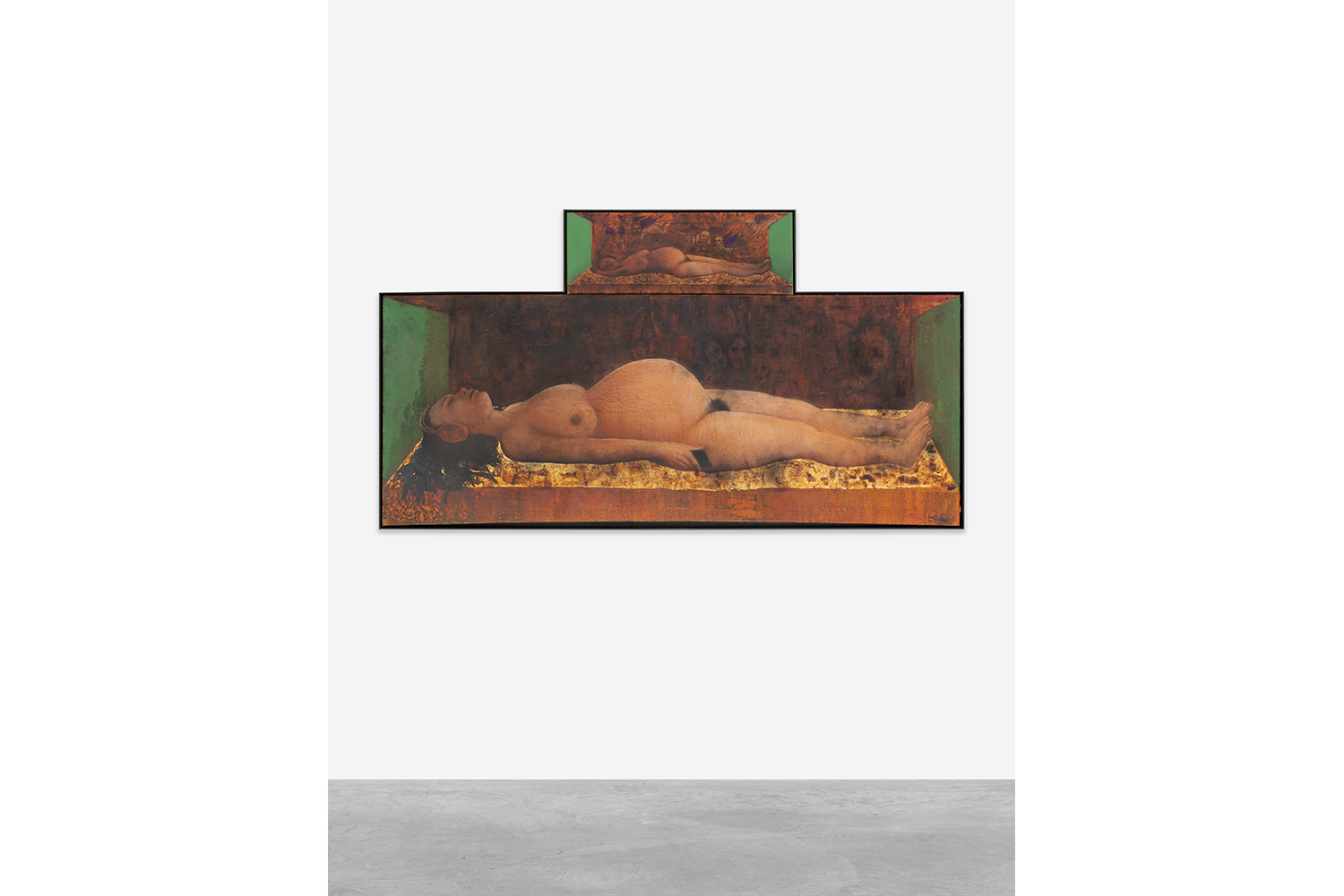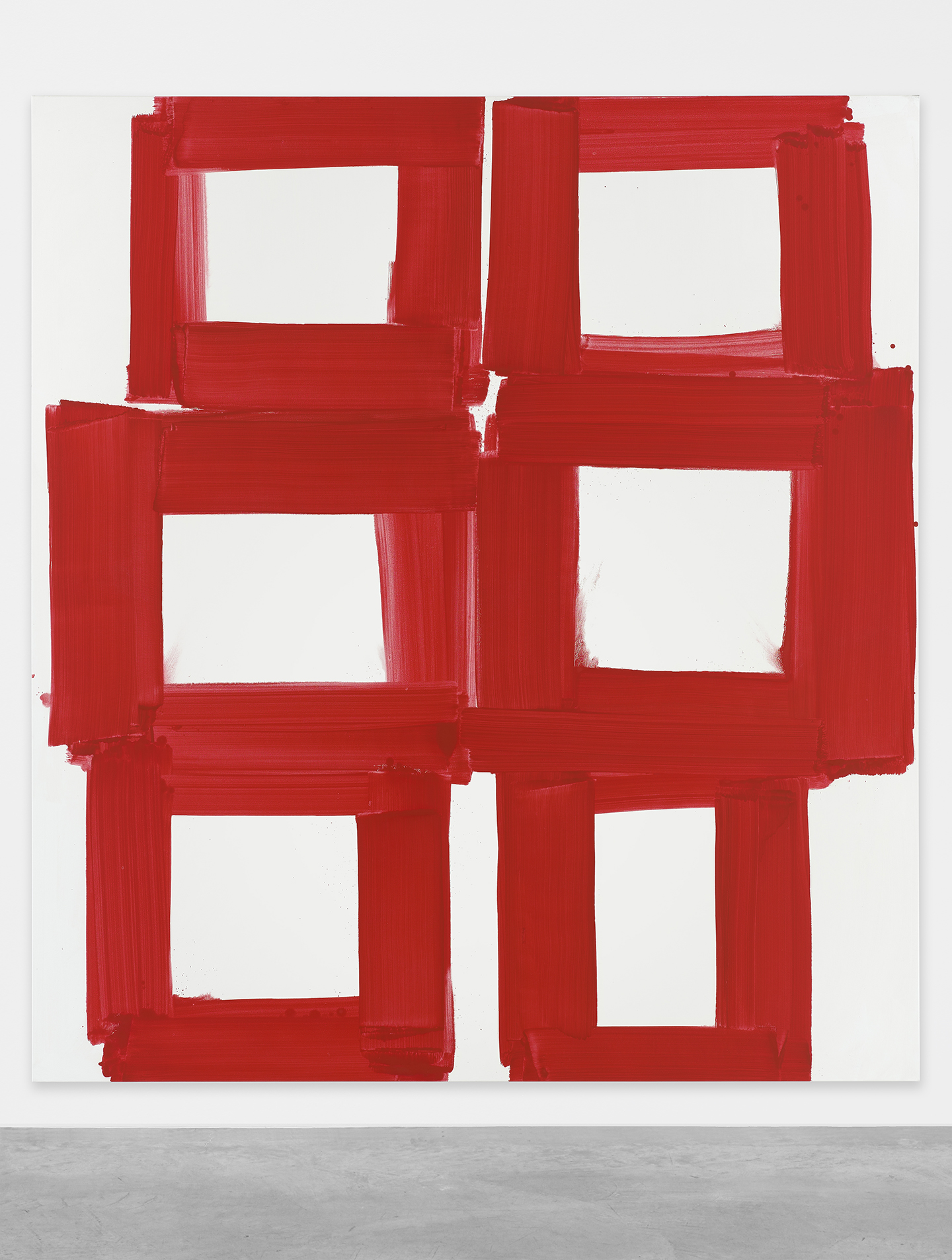Depression feels like an irrepressible yet lethargic urge to continuously ask yourself, “Am I dead yet?” while laying on your comforting duvet on a depressingly sunny day. Then you come to the conclusion that you are not dead yet, as you can still feel the sun prickling on your skin. Then you drearily repeat. Stanislava Kovalcikova’s solo exhibition “am I dead yet” at Peres Projects, Berlin, seems to neither ask nor state this kind of existential terminability. Instead, it soberly places in the room, whose walls are coated in a shiny silvery foil, this unbound rather than lethal thought. The Czechoslovakia-born artist’s show, composed of various large- and small-scale paintings and two witty installations, stars mythic humans — or human-like creatures — who all appear to be in an unreal state of visceral exploration. Smear (2022) shows the side profiles of two balaclava-wearing women staring into each other’s eyes. Their noses touch and so do their tongues. While the latter might suggest an intimate, romantic kiss, the action can more aptly be described as an obscure physical encounter, as both tongues are vigorously muddled. Their contours vanish in a red sea, which could be lipstick as much as it might be blood. Their eyes penetrate each other.
Smear is one of Kovalcikova’s emblematic paintings that veer between death and vitality, sadness and lust, operating in an almost divine, feminine mode and seeming to take place in a fever dream. All presented works exclusively depict female characters, yet a male undercurrent is still present. The installation Vigil (2022), several pairs of men’s dress shoes whose bespoke soles have Kovalcikova’s creatures painted onto them, is mounted on the gallery’s vast windows. The shoes function as an unequivocal symbol for (neoliberal) virility, which, even when its proxies, in other words men, are not present, is never absent. Kovalcikova’s paintings are equipped with a similar non-absence. They seem to be less about their rich imagery and more about the mode, feeling, or atmosphere they occupy a room with.
The antidote of men’s dress shoes is present in Female Parade (2022). The central figure is wearing a diaphanous, whitish bodycon dress, exposing her nipples and pilose vulva. The paint splatters fashioning the dress are akin to pearls or crystals that caress the women’s body. Kovalcikova thereby references a newly emerged craze in fashion for transparent garments, which is simultaneously also a feminist symbol in opposition to the idea that certain female body parts are ostensibly so inherently erotic that they cannot be shown. Not dead yet (2022) is of a similar feminist narrative. The painting depicts a naked pregnant woman — at the beginning of her studies Kovalcikova was pregnant herself — who is laying inside a construction that could be a sarcophagus. Behind her are partially unidentifiable demonic faces. The imagery is almost cynical, drawing upon society’s idea of expectant mothers having to unconditionally await their child with joy.
Reminiscent of Annie Ernaux’s “I Remain in Darkness,” in which the protagonist navigates through notions of obscurity, sadness, and loss due to her mother’s Alzheimer’s disease, “am I dead yet” revolves around a female narrative about what it means to be in a state of anguish — as suggested by the title Sad Venus (2015–22) — and uncertainty. The artist depicts subjects whose faces seem to melt or are on the verge of corporeally transgressing. In Those who smile will also bite (2021) the figure has one human eye and another mystical, diabolical eye, revealing Kovalcikova’s dark, often depressive, grotesquery amid beautiful, transparent dresses.

